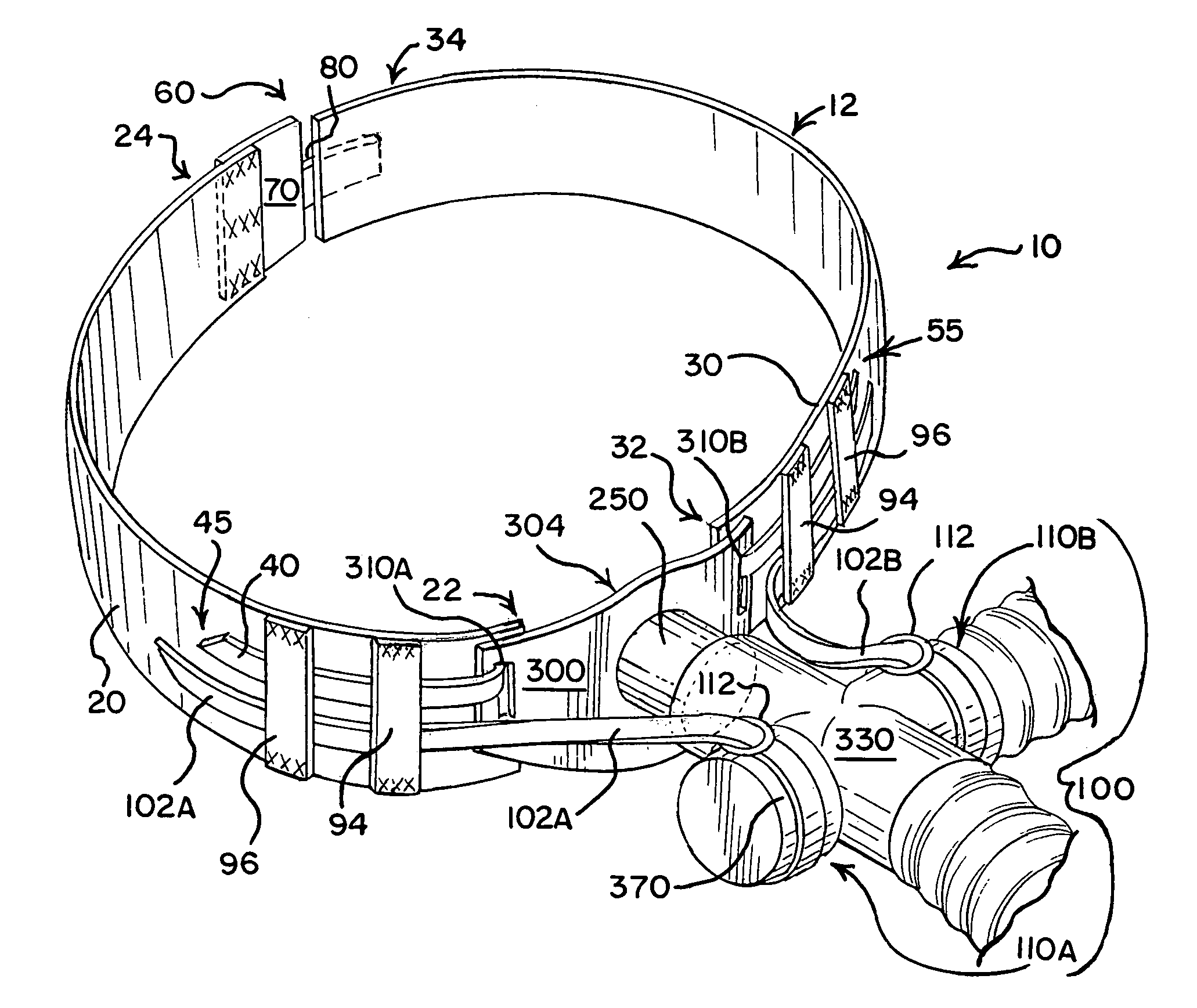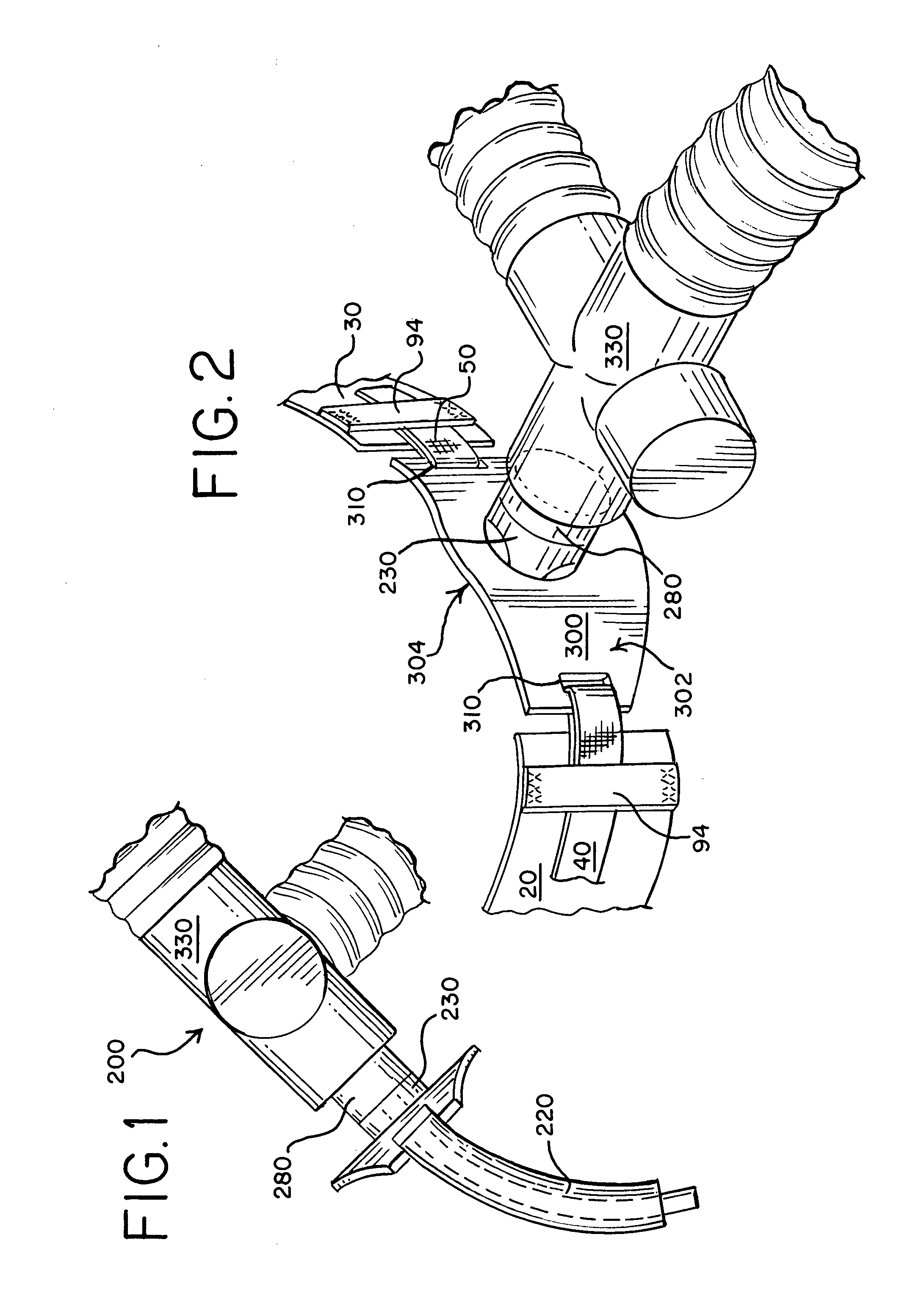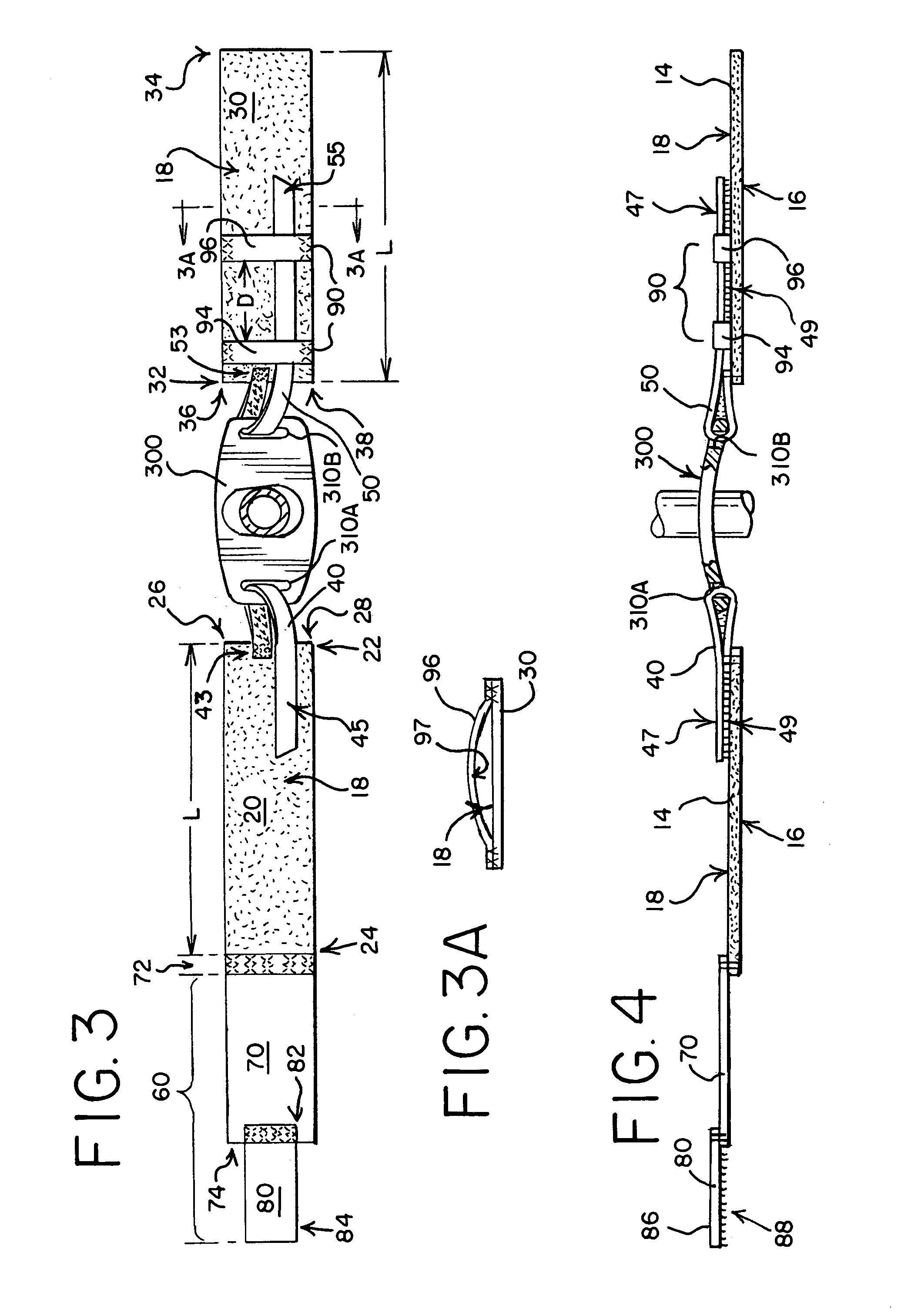Tracheal tube anti-disconnect device
a technology of anti-disconnection device and trachea tube, which is applied in the field of medical devices, can solve the problems of life-threatening situation, failure of friction fit connection between universal connection piece and adapter, and adapter to become either fully or partially dislodged from the trachea tube, etc., and achieve the effect of preventing disconnection
- Summary
- Abstract
- Description
- Claims
- Application Information
AI Technical Summary
Benefits of technology
Problems solved by technology
Method used
Image
Examples
Embodiment Construction
[0021]Referring to FIGS. 1 and 2, a tracheostomy tube assemblage 200 includes an elongated, curved outer cannula portion 220 terminating at an enlarged head section 230. The head section is provided with an internal socket (not shown) which defines an inside diameter. The socket is in communication with the outer cannula portion 220. The enlarged head section 230 is connected to a neck plate 300 through either a pivotal or fixed connection and the outer cannula portion 220 is held within the trachea of the patient by provision of a small balloon device (not shown). Inserted within the socket of the head section 230 and passed down the outer cannula portion 220 is the inner cannula portion 240, shown in dashed line form in FIG. 1. One end of the inner cannula portion 240 is provided with the cylindrically shaped universal connection piece 280, which interlocks within the socket of the enlarged head section 230. FIGS. 1 and 2 show the universal piece 280 being interlocked to the enlar...
PUM
 Login to View More
Login to View More Abstract
Description
Claims
Application Information
 Login to View More
Login to View More - R&D
- Intellectual Property
- Life Sciences
- Materials
- Tech Scout
- Unparalleled Data Quality
- Higher Quality Content
- 60% Fewer Hallucinations
Browse by: Latest US Patents, China's latest patents, Technical Efficacy Thesaurus, Application Domain, Technology Topic, Popular Technical Reports.
© 2025 PatSnap. All rights reserved.Legal|Privacy policy|Modern Slavery Act Transparency Statement|Sitemap|About US| Contact US: help@patsnap.com



